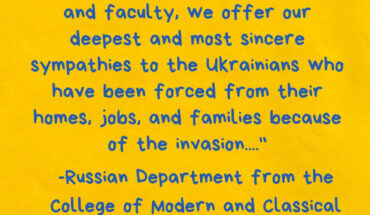Research group looks into the Founding Father’s history of slavery
By Isabella Lamagdeleine, Staff Writer
Enslaved Children of George Mason (ECGM), a research group dedicated to the intricacies of the university namesake’s interactions and history with enslavement, spent last summer exploring how George Mason’s slaves lived their lives and affected the people around them.
“I think George [Mason] the Fourth isn’t the interesting project,” said Assistant Director George Oberle. “I think the people around him and his legacy are.”
Topics ranged from how Mason treated the women that surrounded him, enslaved or not, to the diet and health care that they received at Gunston Hall, Mason’s plantation.
The Mason Honors College Multicultural Alliance hosted ECGM to present their research on Feb. 28, and also released the information they found on the group’s website, including exhibits and articles of their findings.
The group is composed of students Alexis Bracey, Elizabeth Perez-Garcia, Kye Farrow, Ayman Fatima and Farhaj Murshed, all led by Professors Benedict Carton and Wendi Manuel-Scott. Each student member looked at a different aspect of Mason’s interactions with enslaved people.
“They fearlessly asked big questions and welcomed the opportunity to build a website in just a few weeks,” said Scott. “They were moved by the histories –the lives– they uncovered.”
The first member who presented, Elizabeth Perez-Garcia, a criminology, law and society major, studied enslaved women in the household, investigating what role they played within the plantation and keeping it running. During the research process, she found that the main role of enslaved women on Mason’s plantation was to increase his wealth through their children, who were enslaved from birth.
Global affairs major Alexis Bracey spoke next about the culture of the time, measured by newspaper ads that involved the Mason family and the enslaved. She found that Mason most likely bought slaves in Maryland and Virginia that were kidnapped from their homes in Africa as children.
As Bracey studied the literature on that subject, another topic she explored was the culture and community of Mason’s slaves. In a world where they did not have any freedom, being able to sing and dance and engage in their community’s “pillars of their culture” gave hope to the enslaved.
Government & international politics major Ayman Fatima was the next to present her research into how the enslaved at Gunston Hall were treated, including house slaves and ones that traveled with Mason.
Fatima tried to trace one slave in particular, a personal servant named James, who traveled everywhere with Mason and would have seen freed communities of former slaves in places like Philadelphia. There were not enough records to explore his life for long, however, as she found that slave owners often did not memorialize that they owned slaves, but only wanted to exploit their labor and claim them as property.
“Revolution was happening, but they weren’t allowed to be part of it,” said Fatima.
Farhaj Murshed, a community health major, was the final student researcher to speak.
Murshed studied the overall health of Mason’s slaves, including their diet and interactions with members of the health community. He found that slaves often hunted in addition to their limited rations, and that the health care they did receive was paternalistic in nature.
The ECGM students agreed that their research did change their opinion about Mason after learning so much about his involvement with slavery.
“We’ve grown up with the idea of the Founding Fathers, and how they are all so great,” said Perez-Garcia. “I think it’s gonna take some time adjusting.”
After the students finished their presentations, they discussed the future of ECGM’s research. Group members expressed hope that other students will continue researching the topic and expand on what they have learned.
“After weeks of research, they realized that this project was bigger than them and they had a huge responsibility to honor the enslaved men, women and children of Gunston Hall,” said Scott. “This was not just a random history assignment – they were honoring the legacy of those enslaved by Mason.”
Photo Courtesy of Gunstonhall.org




